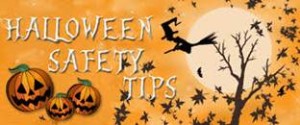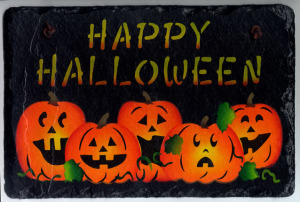 Halloween is celebrated across the United States on October 31st. Not all, but most families will participate in some aspect of the Halloween holiday traditions. This may be a new experience for you so It is a good idea to talk to your host family ahead of time and find out how they celebrate.
Halloween is celebrated across the United States on October 31st. Not all, but most families will participate in some aspect of the Halloween holiday traditions. This may be a new experience for you so It is a good idea to talk to your host family ahead of time and find out how they celebrate.
Like many other holidays, Halloween has changed throughout history. Over 2,000 years ago people called the Celts lived in what is now Ireland, the UK, and parts of Northern France. November 1 was their New Year’s Day. They believed that the night before the New Year (October 31) was a time when the living and the dead came together.
More than a thousand years ago the Christian church named November 1st All Saints Day. This was a special holy day to honor the saints and other people who died for their religion. The night before All Hallows was called Hallows Eve. Later the name was changed to Halloween.
Like the Celts, the Europeans of that time also believed that the spirits of the dead would visit the earth on Halloween. They worried that evil spirits would cause problems or hurt them. So on that night people wore costumes that looked like ghosts or other evil creatures. They thought if they dressed like that, the spirits would think they were also dead and not harm them.
The tradition of Halloween was carried to America by the immigrating Europeans. Some of the traditions changed a little, though. For example, on Halloween in Europe some people would carry lanterns made from turnips. In America, pumpkins were more common. So people began putting candles inside them and using them as lanterns. That is why you see Jack ‘o lanterns today.
These days Halloween is not usually considered a religious holiday. It is primarily a fun day for children. Children dress up in costumes like people did a thousand years ago. But instead of worrying about evil spirits, they go from house to house. They knock on doors and say “trick or treat.” The owner of each house gives candy or something special to each trick or treater.
Here are some safety tips for Trick or Treating:
- Adult supervision is essential. Always accompany the children if they are going door to door to trick or treat
- Try tick-or-treat-friendly homes. Ensure the children only visit houses with lights on. And, you might also suggest the houses they visit have some sort of Halloween decoration on the porch.
- Stay outside. Make sure the children don’t go inside someone’s house. They can trick or treat on the porch.
- Remain visible. Dress the children in bright costumes or have them wear reflective strips or carry a glow stick or flashlight.
- Quality-check treats. Check the candy before they eat it. Throw out any candy that is not in its original wrapper or looks like it has been tampered with.
- Say “no” to strangers. Remind the children to never accept a ride or go anywhere with a stranger.
- Have a great time! Finally, make sure your kids have tons of fun and enjoy the night.



